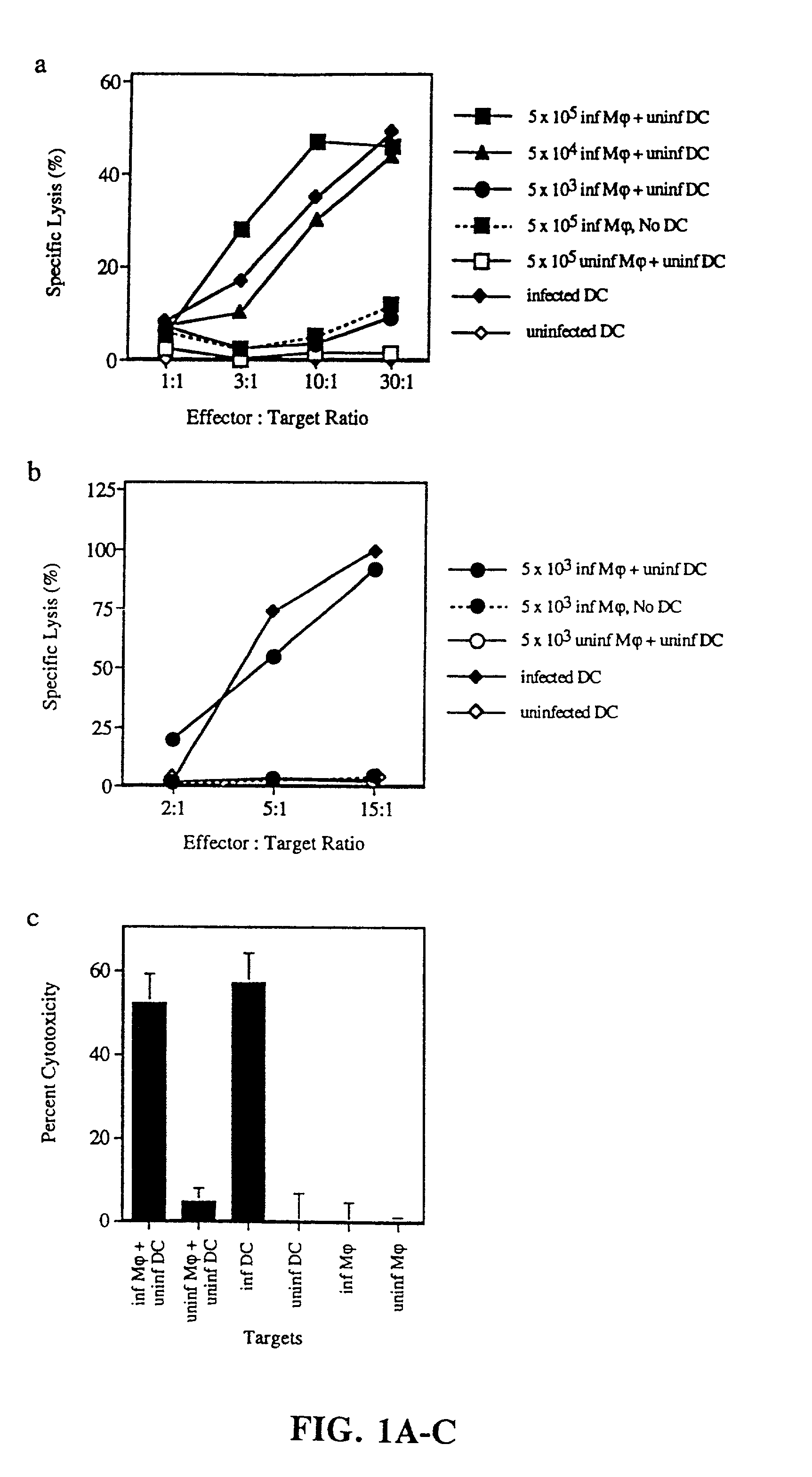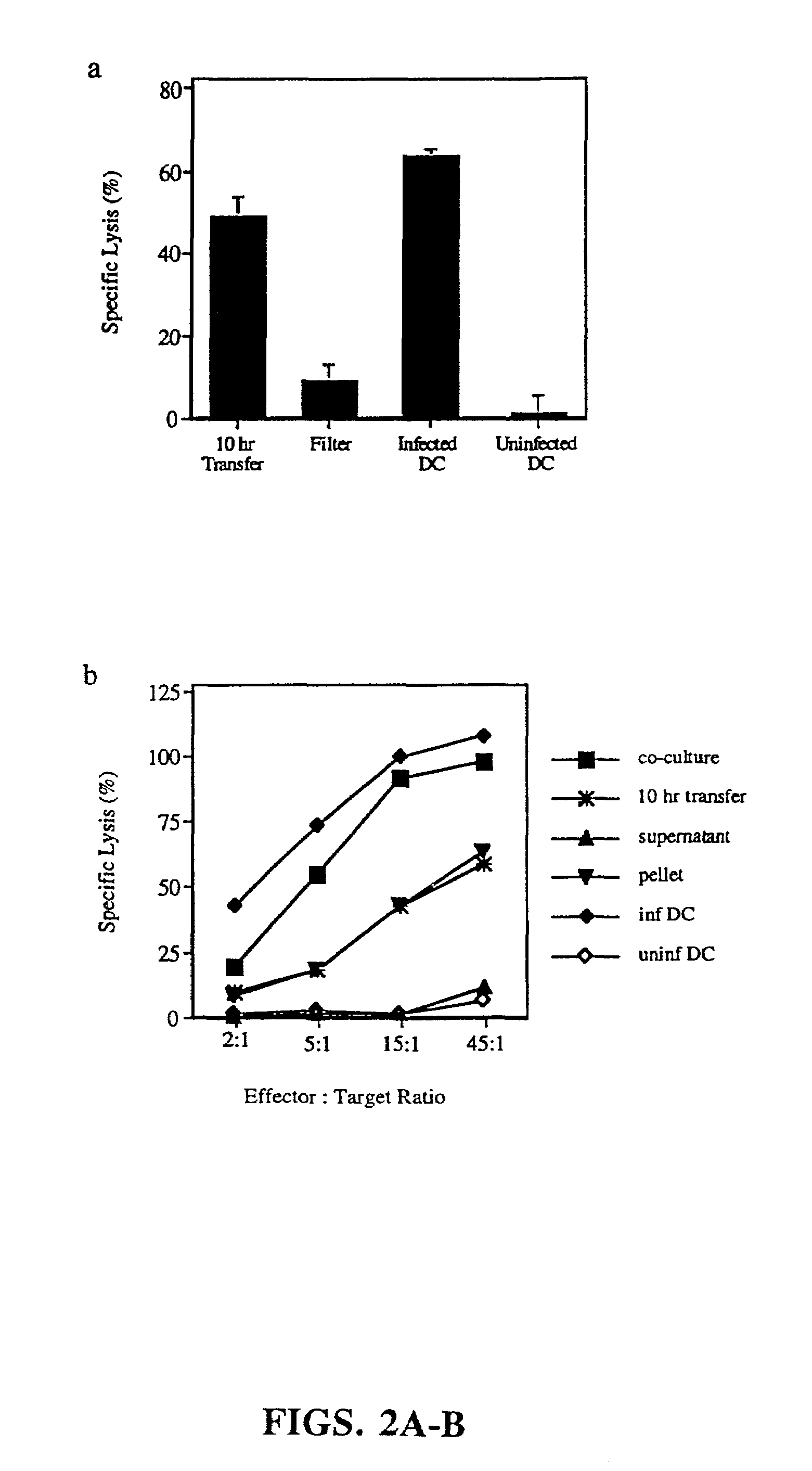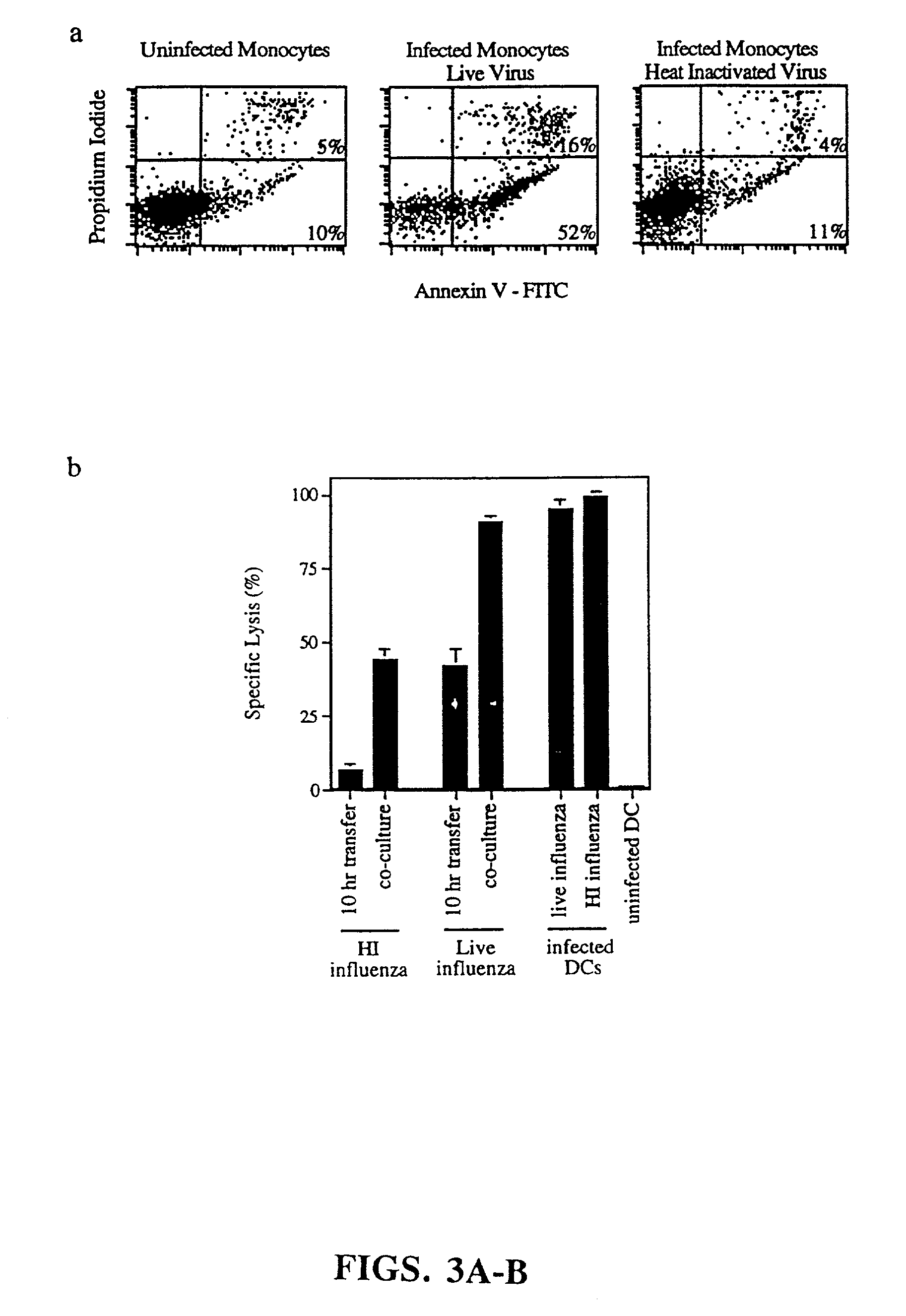Methods for use of apoptotic cells to deliver antigen to dendritic cells for induction or tolerization of T cells
a technology of dendritic cells and apoptotic cells, which is applied in the field of targeted antigen presentation, can solve the problems of ineffective antigen delivery to the mhc class i processing compartment, unfavorable use of powerful adjuvants, and inefficient antigen delivery to the dendritic cell induction or tolerization, etc., and achieve the effect of efficient delivery of specific antigens
- Summary
- Abstract
- Description
- Claims
- Application Information
AI Technical Summary
Benefits of technology
Problems solved by technology
Method used
Image
Examples
example 1
Use of Apoptotic Cells to Deliver Antigen to Dendritic Cells and Induce Class I-Restricted CTLs
Materials & Methods
[0119]Generation of mononuclear subsets. Peripheral blood mononuclear cells [PBMCs] were isolated from blood by sedimentation in Ficoll-Hypaque [Pharmacia Biotech]. T cell-enriched [ER+] and T cell-depleted [ER−] populations were prepared by resetting with neuraminidase treated sheep red blood cells, as previously described (37). T cells were purified from ER+ cells by removal of monocytes, NK cells and MHC class II+ cells (37). Monocytes were obtained from ER− cells by plastic adherence. Dendritic cells were prepared from ER− cells cultured for 7 days in the presence of GM-CSF and IL-4, followed by 4 days in monocyte conditioned medium (42, 43).
Induction and detection of apoptosis. Monocytes were infected with influenza virus in serum free RPMI. Initial time course studies established that after 5 hours, monocytes began to express early markers for apoptosis and that by...
example 2
Apoptotic Transfected 293 Cells Serve as Antigenic Material for ‘Cross-Priming’ of CD8+ T Cells
[0134]The methods and materials unless otherwise specified were the same as in Example 1.
[0135]The following methods were used to carry out the experiments shown in FIG. 6. 293 cells, a human kidney epithelial cell line, were transfected with a construct encoding the matrix gene from Influenza A (filled triangles). After 2 days in culture, 1×104 transfected 293 cells were added to fresh wells and were UV-B irradiated in order to induce apoptotic death. DCs and T cells were then added to these wells and after 7 days, responding T cells were assayed for influenza-specific cytolytic activity using matrix peptide pulsed T2 cells as targets.
Results
[0136]The results demonstrate that a transfected tumor cell line can serve as a donor apoptotic cell, allowing for the transfer of antigen to the uninfected dendritic cell and the effective induction of antigen-specific CD8+ CTLs. Controls included: m...
example 3
CD8+ T-Cells and not CD4+ Cells are Responsible for Infuenza-specific Cytotoxicity
[0137]The following methods were used to carry out the experiments shown in FIG. 7. Generation of CD8+ CTLs requires CD4+ T-cell help. Purification of CD8+ and CD4+ T cells after CTL induction, established that CD8+ cells were responsible for the influenza-specific cytolytic activity. Influenza infected allogeneic monocytes were co-cultured with DCs and T-cells. After 7 days, subpopulations of T cells were purified and tested for cytolytic activity (37). Effector:Target ratio=15:1.
Results
[0138]Given that the lysis of T2 cells, an HLA-A2.1+ cell line, was dependent on the matrix peptide, which is specific for HLA-A2.1, it was expected that the effectors were MHC class I-restricted (see Example 1). To confirm this, highly purified CD4+ and CD8+ subpopulations were isolated at the end of a 7 day culture period. As demonstrated in FIG. 7, CTL activity was detected only in the CD8+ fraction.
PUM
| Property | Measurement | Unit |
|---|---|---|
| Fraction | aaaaa | aaaaa |
| Chemical shift | aaaaa | aaaaa |
| Cytotoxicity | aaaaa | aaaaa |
Abstract
Description
Claims
Application Information
 Login to View More
Login to View More - R&D
- Intellectual Property
- Life Sciences
- Materials
- Tech Scout
- Unparalleled Data Quality
- Higher Quality Content
- 60% Fewer Hallucinations
Browse by: Latest US Patents, China's latest patents, Technical Efficacy Thesaurus, Application Domain, Technology Topic, Popular Technical Reports.
© 2025 PatSnap. All rights reserved.Legal|Privacy policy|Modern Slavery Act Transparency Statement|Sitemap|About US| Contact US: help@patsnap.com



